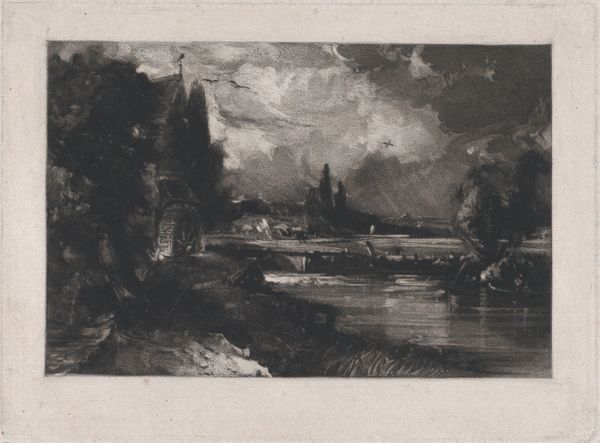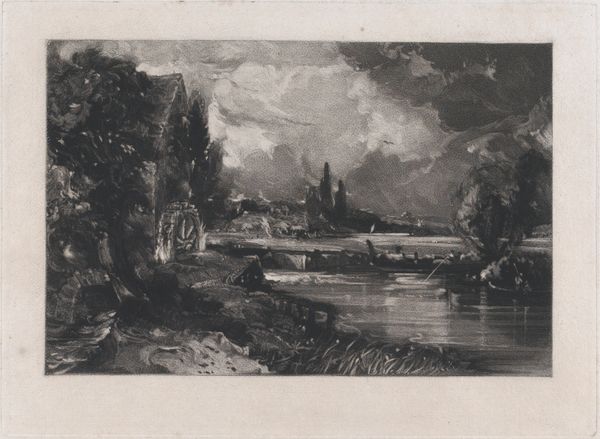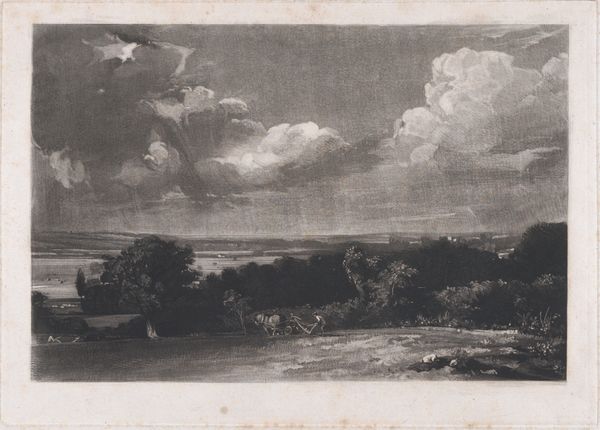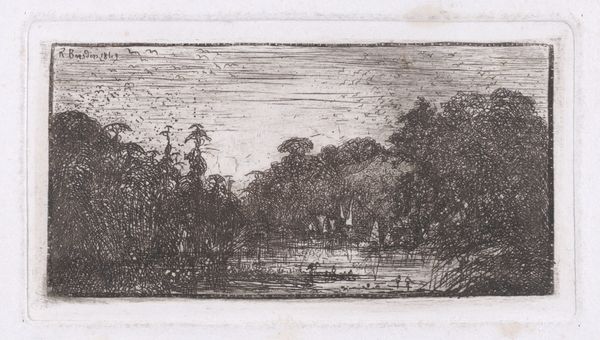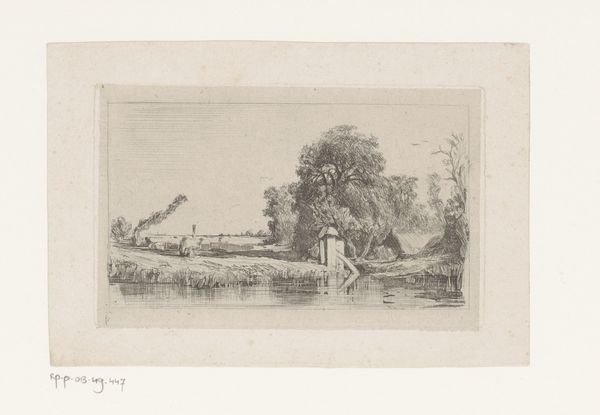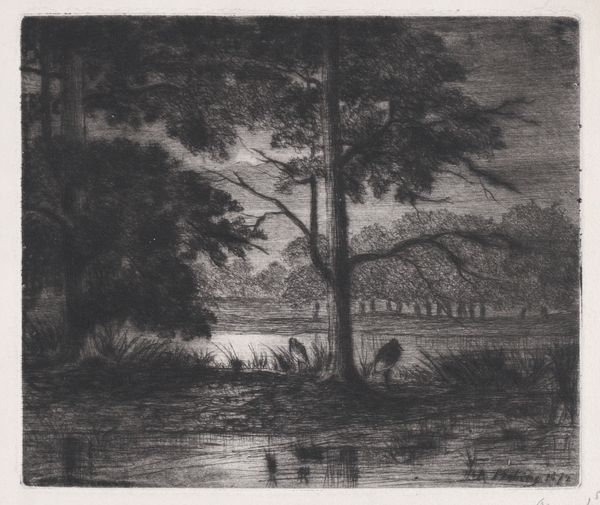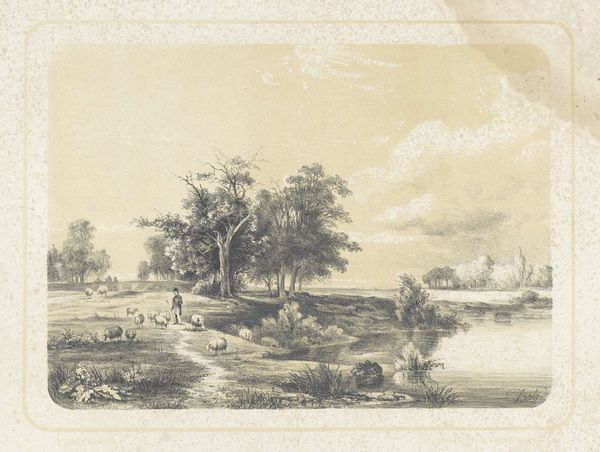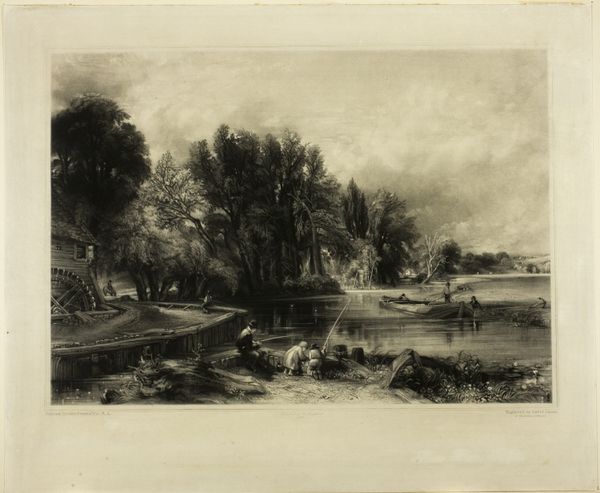
drawing, print, etching
#
drawing
#
boat
# print
#
etching
#
human-figures
#
landscape
#
river
#
figuration
#
romanticism
Dimensions: Image: 5 11/16 × 8 11/16 in. (14.4 × 22.1 cm) Plate: 6 15/16 × 9 7/8 in. (17.6 × 25.1 cm) Sheet: 8 7/8 × 11 15/16 in. (22.5 × 30.3 cm)
Copyright: Public Domain
Curator: Immediately striking, isn't it? The density of the etching gives the whole scene a weighty, almost somber feel. Editor: Indeed. We’re looking at David Lucas's "River Stour," made around 1830. It’s a print, combining etching techniques with drawing, currently residing at The Met. It shows a tranquil waterscape, figures in boats, a bridge… A quintessentially Romantic scene. But I'm curious about the paper choice here. How does its texture affect our perception of the image? Curator: Absolutely. The layering of etching suggests significant hand-labor, requiring highly specialized knowledge for each impression. Look closely, and you notice that this is no mass-produced illustration, but a result of individual craftmanship and the quality of materials chosen: both ink and paper were vital. Moreover, think of how prints facilitated wider access to art and knowledge within the evolving structures of the art market. Editor: Good point. Prints like this played a key role in disseminating imagery. And this subject—rural England—spoke directly to the cultural anxieties of the Industrial Revolution. Lucas and artists like him reinforced a longing for an idealized, pre-industrial past, impacting ideas about national identity. This resonates with current debates about the role of visual imagery and collective memory. How do scenes like these contribute to constructing ideas of ‘Englishness’ and whose story does this art reflect? Curator: Precisely! Examining these themes involves delving into class structures as reflected in artwork production. The labor invested wasn’t just that of the artist or etcher; networks of laborers made production and distribution of prints possible. Each one a commodity and testament to a socioeconomic context— and consumption of them reinforced particular social roles. This particular print showcases a distinct interaction with social constructs, providing fascinating ways of interpreting this visual imagery. Editor: It is thought provoking. I walk away wondering how Romantic-era scenes served ideological roles, both reflecting and shaping perspectives. Curator: Me too! Thinking about the materials involved reminds us to ask critical questions regarding the networks of labor behind art history—networks sometimes deliberately obscured within notions of solitary genius.
Comments
No comments
Be the first to comment and join the conversation on the ultimate creative platform.

